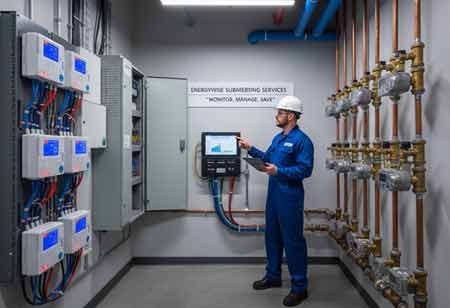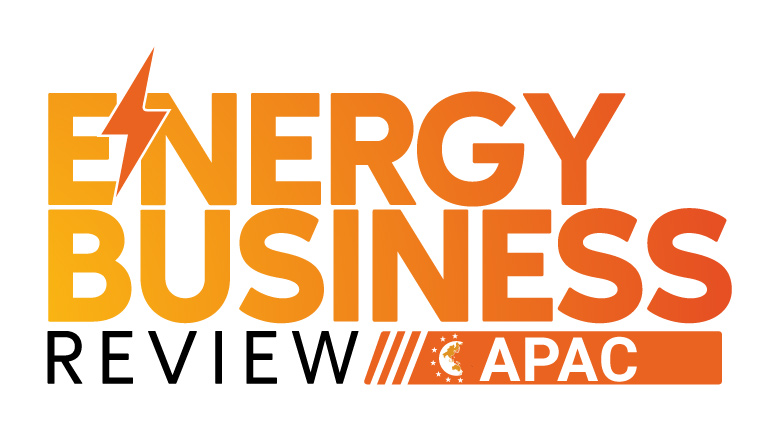Thank you for Subscribing to Energy Business Review Weekly Brief
Submetering as the Backbone of Net-Zero Strategy
Submetering is transforming from a billing tool to an essential strategy for accurate sustainability measurement and accountability, driving corporate Net-Zero and ESG commitments.

By
Energy Business Review | Monday, November 10, 2025
Stay ahead of the industry with exclusive feature stories on the top companies, expert insights and the latest news delivered straight to your inbox. Subscribe today.
In boardrooms and building management offices worldwide, a profound shift is underway. The global transition toward a sustainable future, once a distant aspiration, has solidified into a set of urgent, measurable objectives. Corporate Net-Zero commitments and comprehensive Environmental, Social, and Governance (ESG) frameworks are no longer optional line items in an annual report; they are core drivers of business strategy, investment, and operational integrity.
Amid this seismic shift, a traditionally operational technology—utility submetering—has emerged from the boiler room to become a critical tool for the C-suite. The ability to measure, monitor, and manage water and electricity consumption at a granular level is proving to be the indispensable foundation for credible climate commitments. This is the story of how data-driven accountability is accelerating submetering adoption, transforming it from a simple billing tool into a strategic engine for decarbonization.
The New Mandate: Data, Not Estimates
For decades, the built environment has relied on a system of master metering, in which a commercial or residential property received a single utility bill and costs were distributed among tenants using broad, often inaccurate measures such as square footage. This approach fostered a lack of transparency and, more critically, a lack of individual accountability. When consumption is collectively managed, there is little motivation for tenants or occupants to conserve resources.
However, the emergence of global ESG frameworks and the accelerating drive toward Net-Zero emissions have rendered this estimation-based model obsolete. In today’s sustainability landscape, one principle prevails: you cannot manage what you do not measure.
A Net-Zero pledge is no longer a symbolic gesture—it is a time-bound, data-driven commitment that demands precise accounting of all emission sources. For most organizations, operational energy use—classified as Scope 2 emissions—represents a significant share of their carbon footprint. At the same time, ESG frameworks now hold companies to higher standards of transparency, requiring verifiable and auditable data to substantiate environmental claims. Accurate reporting on energy consumption, greenhouse gas emissions, water usage, and waste generation is no longer optional; it is a prerequisite for credibility with investors, regulators, and consumers alike.
In this context, estimation has become a liability. Stakeholders expect proof, and that proof begins with granular, real-time measurement. Submetering, therefore, is no longer merely an operational convenience—it is a strategic imperative for achieving transparency, accountability, and measurable sustainability outcomes.
Submetering as the Engine of Efficiency
Submetering delivers the high-resolution data essential to meet modern energy performance, Net-Zero, and ESG objectives. By installing meters on individual tenant spaces, specific floors, or major energy-consuming systems, such as HVAC units, lighting circuits, or production lines, building owners and facility managers gain unprecedented visibility into resource consumption. This enhanced visibility serves as the foundation for a cascade of benefits that directly advance sustainability, operational efficiency, and regulatory compliance.
Submetering enables the precise identification of inefficiencies and drives the development of reduction strategies. While a master meter may only indicate excessive overall energy use, a submeter can pinpoint the root cause—such as an HVAC system running at full capacity on an unoccupied floor, a tenant’s disproportionate after-hours consumption, or equipment operating well above its expected power draw. This granular insight supports targeted interventions, allowing managers to optimize operational schedules, identify maintenance needs, and prioritize capital investments for upgrades that yield the highest decarbonization impact.
It also fosters accountability and behavioral change. When tenants or departments are billed based on actual consumption, a powerful financial incentive for conservation emerges. This market-based feedback mechanism cultivates awareness and responsibility, prompting simple yet impactful behavioral adjustments—such as turning off unused lights, adjusting thermostat settings, or reporting leaks. Such behavioral shifts, though often underestimated, are critical to achieving lasting sustainability outcomes.
Submetering provides the data backbone for accurate reporting and compliance. For organizations reporting under global sustainability standards, data integrity is non-negotiable. Submetering delivers precise, time-stamped, and auditable data for the environmental (E) component of ESG disclosures. It underpins accurate carbon footprinting, supports Scope 2 and Scope 3 emissions calculations, and fulfills measurement and verification (M&V) requirements for certifications such as LEED and BREEAM. Moreover, it ensures compliance with increasingly stringent energy and water reporting mandates. In the absence of submetering, environmental reporting relies on estimates and assumptions—insufficient in an era of heightened investor scrutiny and regulatory accountability.
The Future is Measured
The accelerating adoption of water and electric submetering is no longer just a trend in facility management; it is a direct market response to the global mobilization around climate action. As more organizations tie their financial health and public reputation to their ESG performance, the technologies that underpin those claims become mission-critical.
Advanced submetering systems, now often integrated with cloud-based analytics platforms and Internet of Things (IoT) sensors, are providing insights that go far beyond a monthly bill. They offer real-time alerts for anomalies, predictive maintenance suggestions, and sophisticated dashboards that allow stakeholders to track progress against reduction targets minute by minute.
The industry is rapidly moving toward a future where every significant point of consumption is measured and managed. The push for a Net-Zero world and the unyielding demands of global ESG frameworks have fundamentally changed the value proposition of submetering. What was once a tool for fair billing has become the bedrock of corporate climate ambition, providing the essential data, accountability, and insight needed to turn sustainability pledges into verifiable reality.






